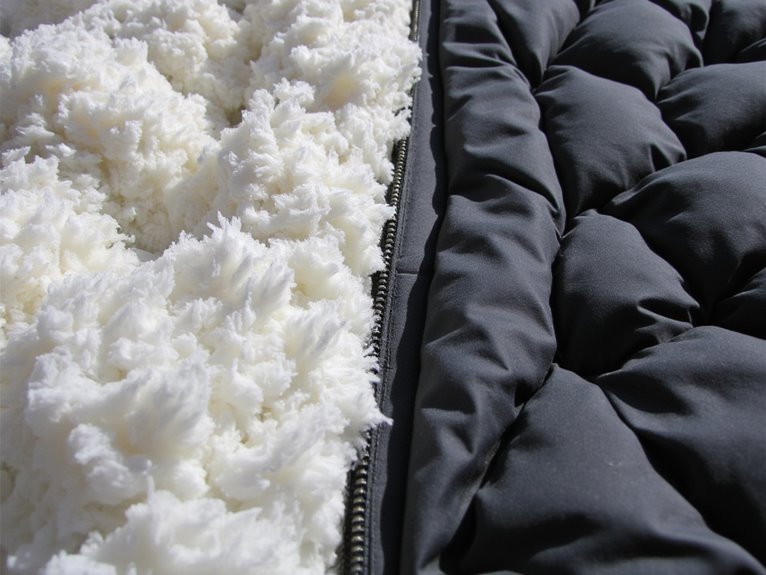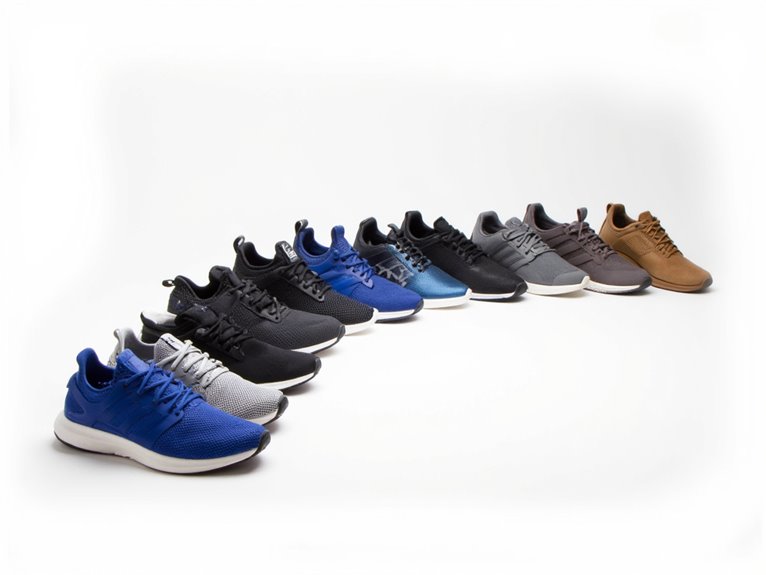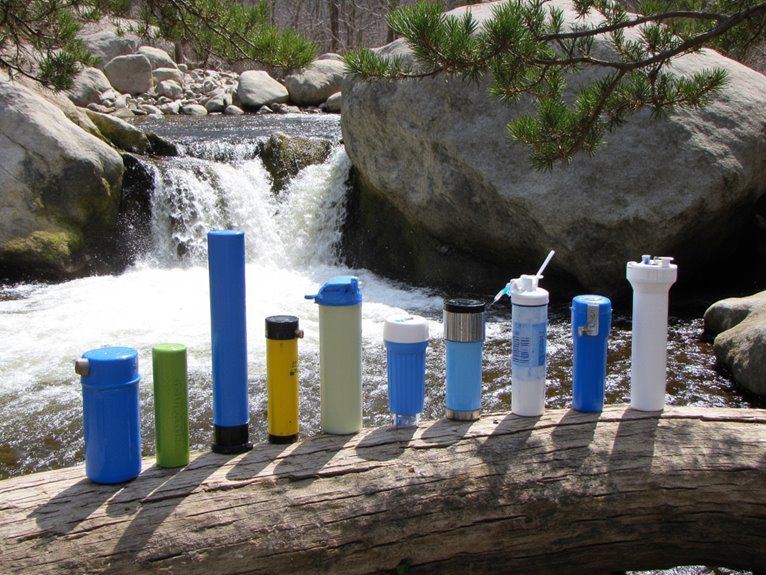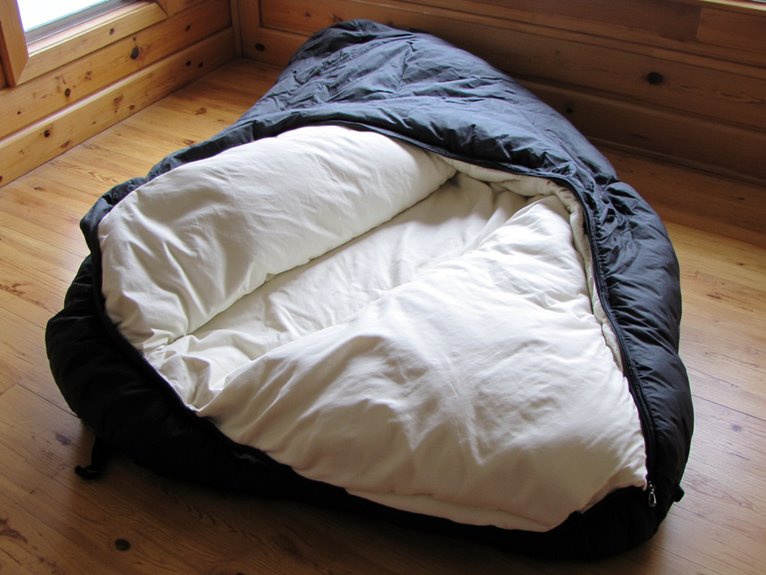Sleeping Bag Insulation Explained: Down vs. Synthetic, Fill Power & Loft
Down insulation offers superior warmth-to-weight ratios and compressibility, making it ideal for dry conditions with fill power ratings from 400-900+ indicating quality. However, down loses 70-80% effectiveness when wet. Synthetic insulation retains 90% of its thermal properties in moisture, costs 30-50% less, and dries 3-4 times faster than down. Fill power measures loft quality—550 is budget-grade while 800+ represents premium performance. Your activity type, climate conditions, and budget will determine which insulation delivers peak performance for your specific outdoor adventures.
We are supported by our audience. When you purchase through links on our site, we may earn an affiliate commission, at no extra cost for you. Learn more. Last update on 10th December 2025 / Images from Amazon Product Advertising API.
Notable Insights
- Down insulation offers superior warmth-to-weight ratios and compressibility but loses effectiveness when wet, requiring specialized care.
- Synthetic insulation retains 90% of thermal properties when wet, costs less than down, and dries faster.
- Fill power ratings (400-900+) indicate down quality; higher numbers mean better compressibility, lighter weight, and superior insulation.
- Down excels in cold, dry conditions while synthetic performs better in wet climates and unpredictable weather.
- Higher fill power creates more loft for trapping air, improving thermal efficiency and packability for ultralight backpacking.
Understanding Down Insulation: Warmth, Compressibility, and Performance
Down insulation represents the gold standard for sleeping bag warmth in cold, dry conditions.
Down insulation delivers unmatched warmth-to-weight performance, making it the preferred choice for serious cold-weather adventurers seeking lightweight, compressible sleep systems.
Down Characteristics include superior warmth-to-weight ratios and exceptional compressibility that synthetic materials can’t match. You’ll find Down Advantages in its decades-long durability and incredible packability for ultralight backpacking.
However, Down Limitations become apparent when moisture enters the equation—wet down loses insulating properties completely.
Down Applications excel in cold, dry environments where weight matters most. Fill power ratings from 650 to 900+ determine insulation efficiency per ounce.
Down Technology now includes water-resistant treatments that help maintain loft in damp conditions.
Down Maintenance requires proper cleaning and storage techniques to preserve performance.
Down Comparisons consistently show better compressibility than synthetics, though at higher costs.
Down Popularity continues growing among serious outdoor enthusiasts despite moisture sensitivity concerns.
Down bags utilize baffle design systems to prevent insulation migration and maintain consistent warmth distribution throughout the sleeping bag.
Synthetic Insulation: Water Resistance and Cost-Effective Protection
Most outdoor enthusiasts will encounter wet conditions that render down insulation nearly useless, making synthetic insulation the practical choice for unpredictable weather. You’ll maintain warmth even when your sleeping bag gets soaked.
Synthetic fills like Primaloft and Climashield retain 90% of their insulating properties when wet, while down loses nearly all effectiveness.
Budget considerations make synthetic insulation attractive for casual campers. You’ll pay 30-50% less than comparable down bags while getting reliable performance.
Modern synthetic materials offer improved warmth-to-weight ratios of 2.5-3.0 compared to older fills at 1.8-2.2.
Synthetic durability guarantees consistent loft retention through hundreds of compression cycles. You won’t experience the gradual performance loss that affects down over time.
Quick-drying properties restore full insulation within 2-4 hours versus down’s 12-24 hour drying time.
Advanced bonded synthetic insulation fuses fibers into continuous sheets to eliminate cold spots and provides more cost-effective durability than loose-fill designs.
Fill Power Ratings and What They Mean for Your Sleeping Bag
When you’re shopping for a down sleeping bag, you’ll encounter fill power ratings that range from 400 to 900 and beyond.
These numbers directly measure how much space one ounce of down occupies when fully lofted, with higher ratings indicating superior insulation quality that traps more air per unit weight.
Understanding these ratings is vital because they determine your sleeping bag’s weight, packability, and thermal efficiency in the backcountry.
For ultralight backpacking, bags with high fill power down should target sub-2-pound weights to minimize pack burden without sacrificing warmth.
Understanding Fill Power Numbers
Fill power represents the fundamental metric for measuring down quality in sleeping bags, expressing how many cubic inches one ounce of down occupies under standardized testing conditions.
The fill power importance becomes clear when comparing common ratings: 550 fill power indicates budget-grade down, while 800+ fill power represents premium quality insulation.
Higher numbers directly correlate with superior insulation efficiency. You’ll find that 900 fill power down traps considerably more air per ounce than 500 fill power, creating better warmth-to-weight ratios.
This matters because trapped air provides the actual insulation, not the down itself.
Premium sleeping bags typically feature 700-900 fill power ratings, delivering maximum loft with minimal weight.
Budget options range from 500-650 fill power, offering adequate performance at lower costs but increased packed size.
Higher Ratings Equal Warmth
The relationship between fill power ratings and actual warmth isn’t as straightforward as many backpackers assume. Higher fill power improves heat retention through increased insulative efficiency, but total loft determines your bag’s real-world performance.
An 850-fill bag won’t necessarily keep you warmer than a 650-fill bag with identical temperature ratings.
You’ll find that bags with the same temperature rating but higher fill power offer superior compressibility and reduced weight. The 850-fill version achieves equivalent warmth using less down material.
However, manufacturers often reduce fill quantities in high-fill-power bags to save weight while maintaining target loft specifications.
Consider fill power as a quality indicator rather than a warmth guarantee. Higher ratings mean better loft recovery after compression and improved packability, making them ideal for ultralight backpacking where every ounce matters.
Fill Power Affects Weight
Although down’s loft capabilities determine warmth potential, weight becomes the critical factor that separates premium sleeping bags from budget alternatives. Higher fill power directly translates to weight reduction without sacrificing thermal performance.
A 900-fill-power sleeping bag requires markedly less down than a 600-fill-power bag to achieve identical warmth ratings. This relationship stems from insulation efficiency—higher fill power down traps more air per gram of material.
You’ll find that 800+ fill power sleeping bags weigh 20-30% less than 600-fill alternatives with comparable temperature ratings. For backpackers, this weight difference matters considerably over long distances.
The trade-off involves cost, as premium fill power commands higher prices. However, the weight savings and compression benefits often justify the investment for serious outdoor enthusiasts prioritizing pack weight optimization.
Performance Comparison: Wet vs. Dry Conditions
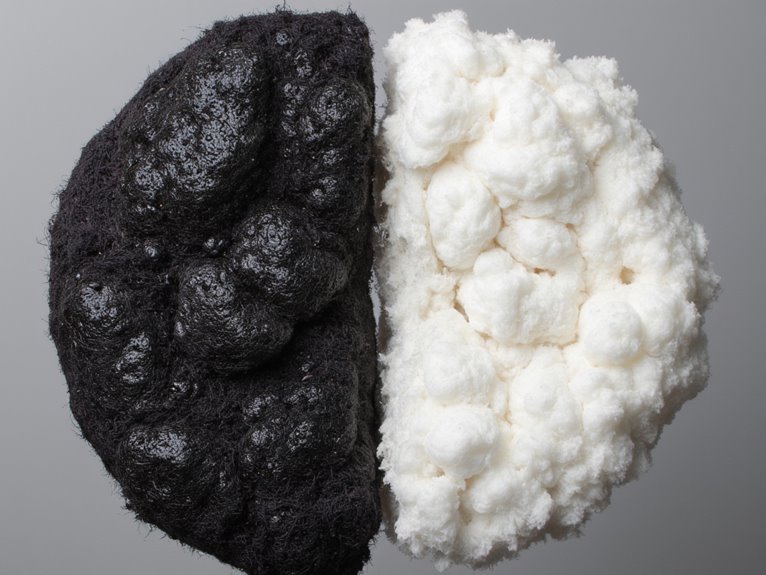
Your sleeping bag’s insulation type determines how well you’ll stay warm when conditions turn challenging.
Down insulation excels in dry environments, delivering superior warmth-to-weight ratios and exceptional compressibility that synthetic materials can’t match.
However, synthetic insulation becomes the clear winner when moisture enters the picture, maintaining its insulating properties while down loses effectiveness and clumps together.
Modern synthetic fills like polyester fiber provide reliable warmth without excessive weight, making them ideal for unpredictable weather conditions.
Down in Dry Conditions
When conditions remain dry, down insulation delivers unmatched performance that’s made it the gold standard for ultralight backpacking gear.
You’ll experience superior warmth-to-weight ratios that synthetic materials simply can’t match. Down insulation benefits include exceptional loft—the volume of air trapped within the clusters—which creates dead air space for thermal efficiency.
Fill power ratings of 650-800 are standard for quality bags, while 850+ represents premium performance requiring less down for equivalent warmth.
Different down insulation types include traditional untreated down and water-resistant variants like DriDown or DownTek.
You’ll pack smaller and carry less weight compared to synthetic alternatives. The natural resilience of down clusters creates maximum loft recovery after compression, maintaining consistent thermal performance throughout your bag’s lifespan when properly maintained.
Synthetic When Wet
Synthetic insulation transforms the wet weather game by maintaining warmth even when soaked, unlike down which loses nearly all thermal performance when moisture penetrates the clusters.
You’ll retain approximately 70-80% of thermal efficiency in damp conditions compared to down’s 10-20% retention rate.
The wet performance advantage stems from synthetic fibers’ hydrophobic properties and structural design.
Interwoven plastic fibers maintain loft even when saturated, creating air pockets that trap body heat.
Moisture resistance comes from the material’s inability to absorb water, unlike down’s natural tendency to clump when wet.
Synthetic bags dry 3-4 times faster than down equivalents.
In coastal or humid environments, you’ll experience consistent warmth throughout the night.
This reliability makes synthetic insulation ideal for unpredictable weather conditions where moisture exposure is likely.
Humidity Impact Factors
Humidity levels dramatically alter sleeping bag performance, creating a stark divide between ideal and compromised thermal efficiency.
In dry conditions, down insulation maintains superior warmth-to-weight ratios and compressibility. However, humidity effects fundamentally compromise down’s loft retention capabilities. When moisture saturates down clusters, insulative power drops markedly, transforming lightweight warmth into heavy, cold material resembling wet paper mache.
Synthetic insulation performs consistently regardless of moisture levels. You’ll retain approximately 90% thermal efficiency even when wet. Down requires days of sunlight or machine drying to restore performance, while synthetic materials dry within hours.
Environmental factors like temperature and humidity create variable performance scenarios.
Effective moisture management through water-repellent shells, pack liners, and proper layering systems becomes critical for maintaining thermal efficiency in challenging conditions.
Care, Maintenance, and Longevity of Different Insulation Types
How you care for your sleeping bag determines whether it’ll keep you warm for years or lose its insulating power after just a few seasons. Proper cleaning tips and storage solutions vary considerably between insulation types.
Down requires delicate handling. Wash once yearly with specialized down soap using hand washing or front-loading machines on delicate settings. Avoid dry cleaning—solvents strip natural oils and reduce loft retention. Rinse thoroughly to remove soap residues.
Synthetic insulation tolerates moisture better but still needs regular cleaning. Both types require uncompressed storage in spacious bags with good ventilation. Store in dry areas away from sharp objects.
Air dry completely after washing to prevent mildew. Higher fill power down maintains better insulation when properly cared for, while synthetic materials offer greater durability against moisture and wear.
Use clean tennis balls in the dryer on low heat settings to prevent down clumping and restore loft after machine washing.
Choosing the Right Insulation for Your Outdoor Adventures
When selecting insulation for your sleeping bag, your specific outdoor activities and environmental conditions should drive your decision more than marketing claims or general preferences. Different insulation types perform best under distinct circumstances, making activity-specific selection essential.
| Activity Type | Recommended Insulation |
|---|---|
| Backpacking | Down (weight matters) |
| Car Camping | Either type works well |
| Wet Climates | Synthetic preferred |
| Cold/Dry Conditions | Down excels |
Consider outdoor temperatures you’ll encounter most frequently. Down provides superior warmth-to-weight ratios for alpine climbing and long-distance hiking where pack weight matters. Synthetic fills work better for kayaking, rainforest trekking, or coastal camping where moisture exposure increases. Your budget, storage space, and maintenance preferences also influence this decision greatly. For extreme cold conditions, look for down sleeping bags with 600+ fill power as they deliver exceptional thermal efficiency when temperatures drop below freezing.

